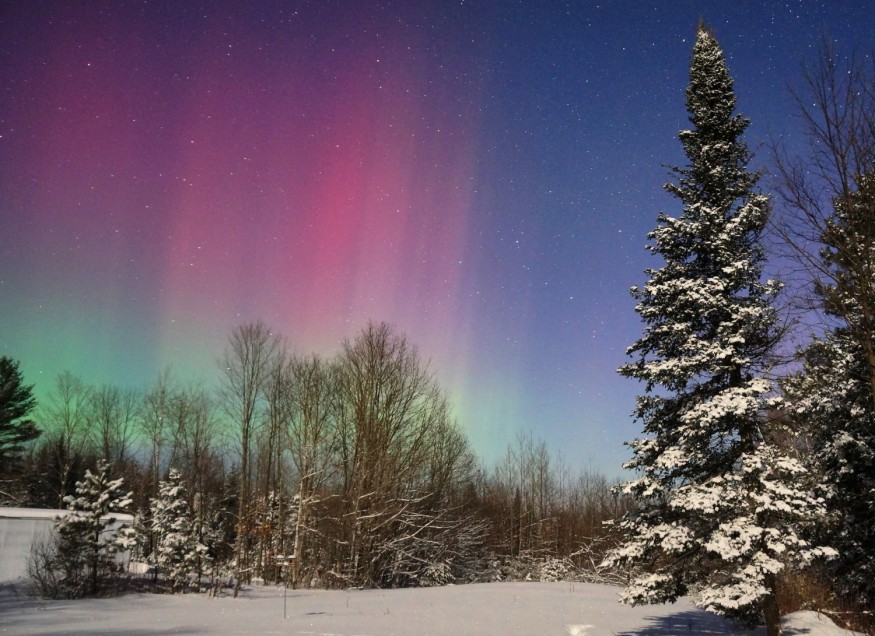
According to NOAA, displays of the northern lights could be seen over the Midwest and Northeast US skies tomorrow night as a result of the recent G3 geomagnetic storm.
Northern Lights From G3 Geomagnetic Storm
Parts of the Midwest and Northeast states are in for a celestial treat, as the NOAA Space Weather Prediction Center has issued an alert indicating that the northern lights, or aurora borealis, may be visible tonight and tomorrow night. The forecasts from the Prediction Center suggest that residents as far south as central South Dakota and southern Wisconsin might have the opportunity to witness this stunning natural phenomenon, contingent upon favorable conditions. The reason behind this expanded visibility of the lights is a geomagnetic storm of G3 strength, induced by a coronal mass ejection from the sun.
Coronal mass ejections are described by NASA as vast bubbles of coronal plasma, interlaced with intense magnetic field lines, that are ejected from the Sun over several hours. These eruptions often resemble immense, twisted ropes and can coincide with solar flares or eruptions on the sun's surface.
A G3 Strong Geomagnetic Storm signifies a substantial disturbance in Earth's magnetic field, exhibiting variable intensity over several hours. The G3 Warning remained in effect throughout November 5.
Here is an animation of the last 24 hours of #NorthernLights forecasts for North America.
— Grand Forks, ND Sky Color (@gfndskycolor) November 6, 2023
Images from NOAA Space Weather Prediction Center#Space #Aurora #SWPC #NOAA pic.twitter.com/8YwDvupyHr
By Monday night, the visibility of this astral display will gradually diminish, as opposed to Sunday night when auroras became viewable from regions such as Iowa and Nebraska.
Possible Power Grid Risks
The Prediction Center reassured the general public regarding increased geomagnetic activity, suggesting no cause for concern. However, infrastructure operators were advised to take precautions to minimize potential impacts. The release also mentioned potential technological effects on the power grid and spacecraft.
Intense Northern Lights
The northern lights, or aurora borealis, recently made a preliminary appearance in the Northwest and the corner of the country, delighting observers in Washington and Wyoming. While these nights offered a glimpse, they may not be the only chance for the aurora to grace the southern skies.
Sunspot observations, a crucial indicator of northern lights activity, have seen a significant uptick since 2022. Scientists forecast that this is just the beginning of a peak expected in the next 18 months, promising the brightest and most far-reaching auroras in two decades. Mark Miesch, a scientist with the National Oceanic and Atmospheric Administration and a researcher at the University of Colorado - Boulder, anticipates that this activity will steadily rise until fall 2024 when the auroras will be at their most brilliant.
Notably, forecasters at NOAA's Space Weather Prediction Center revealed that the solar forces responsible for these breathtaking sky displays are expected to peak in the following year at a higher level than previously projected. This updated prediction now places Solar Cycle 25's peak between January and October of 2024.
While the Solar Cycle 25 Prediction Panel initially expected below-average sunspot activity with 110 to 115 sunspots at its peak, updated models from various scientists indicate that sunspots may surge as high as 235, promising an increase in captivating auroral displays.
Related Article : Intense Solar Storms Could Cause the Strongest Northern Lights Activity For the Next 18 Months
© 2025 NatureWorldNews.com All rights reserved. Do not reproduce without permission.





